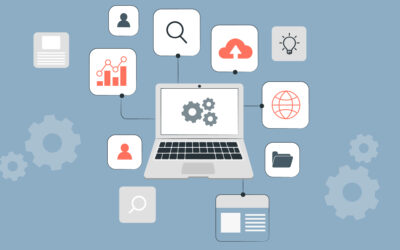In all businesses, communication is where it’s at. Communication is of fundamental importance when it comes to a project and all its various stakeholders. How, when, and why you communicate the various elements of your ongoing project is crucial. So, we have created this useful guide to help you make sure all your bases are covered.
What is a project management communication plan?
A project communication plan is a strategic plan of operations. This shows how crucial information is going to be communicated to all interested parties in your project. It sets out exactly who will hear which information when, how frequently, and by what means. “If you’re a project manager,” says Wendy James, a business blogger at Write my X and 1 Day 2 write, “you have probably worked out all the finer details of the project itself. However, have you considered at which exact points of your process you’re going to update your client, your team members, or your senior leadership?
The importance of a project management communication plan
A project may not make the distance if the communication surrounding it is poor. It could well be the most ambitious, well-thought-out project in the world. If it is not communicated effectively though, to the right people, financial loss to the company may be the result.
A project management communication plan is invaluable because it:
- Allows for written documentation and a recording of the project all stakeholders can refer to
- Gives a clear roadmap of when stakeholders can expect updates
- Allows for visibility and transparency at all stages of the project
- Gives opportunity for feedback from all interested parties, to avoid wasted endeavours or missteps
- Streamlines meetings or dispenses with them altogether.
- Increases the chance of a projected being completed to schedule, and with success
How to create a project management communication plan?

The following are all important points to include in your project communication plan:
- The objective of your communication plan
- The roles of each of your stakeholders in the project
- The kind of information you will need to share
- Which methods of communication you are going to employ
- How often you plan for each shareholder to receive information
The most important steps to take in its creation are:
1. Choose your desired format
Your platform for communicating information will be very important, so choose it wisely. It should allow for the easy collection of feedback from all interested parties, easy storage, and the ability to be shared. Traditionally, a project manager might make use of a Word document or an Excel spreadsheet. Now, you might prefer the more visual benefit of a timeline or a flowchart. These can clearly showcase your information and updates, and lay out at which punctuation points they will be delivered to your stakeholders.
2. Identify your goal in communication
Make your goal clear and convey it from the start. It will help your plan to have a focus and make it far easier for you to stick to. The goal may be simply to keep stakeholders informed on all aspects of your project, but it may also include making them continually mindful of your project’s benefits and general ethos. This will keep them firmly on board with its intent. Write your goal down, and advocate is as you go through the execution of your project.
3. Identify who your stakeholders are
Projects will invariably have many different kinds of stakeholders, all of them with varying degrees of involvement. Make sure you identify and list each and every one of the stakeholders who are invested in your project, and who you’re going to be communicating with. These will include team members directly involved in the project, management and senior leadership, investors, and strategists. This list will be also very useful for those new to the project or unfamiliar with it, so they can view who their fellow stakeholders are.
4. Identify your methods of communication
How do you intend to communicate with your stakeholders and all who have an interest in your project? Are you going to use email, phone calls, conference calls, virtual meetings, in-person meetings, or social media? Before you decide, make sure you take into consideration stakeholders’ preferred methods of being contacted. Here’s a more detailed list:
- Check-ins, daily or weekly
- Video conferencing, in person, or over the phone meetings
- Summaries of meetings communicated by email
- Status reports
- Presentations
- Surveys and charts
- ‘To action’ lists
- A project dashboard
- Collaboration apps – Slack or Google Hangouts
Also, think about how you will deliver information. This can be when you reach an important milestone, or if there is an unexpected event or consequence you want to give notice of. Consider how formal you want each any every communication to be, depending on the progress of the project.
5. Set out your frequency of communication
How often are you going to communicate, and for which type of communication method? For example, are you going to send a weekly email on a Monday morning, or a monthly budget report, discussed in an in-person meeting? How often are you going to include each person? Will certain executives receive less frequent, need-to-know information, while more grass-roots team members need daily updates? This important frequency planning also needs to be copied over to your calendar or task management software.
6. Determine who is going to provide your communications
This role will most often be taken on by the project manager, but if there are other team members who are going to be sending out updates, make sure you include their names and roles in your plan and detail what they will be communicating, when.
7. What to do if your project changes?
If the project changes, as projects often do, your communication plan needs to change along with it. Your plan must allow for adaptation and addition, without causing undue stress or concern. “Your communication plan is your Mother Ship,” says Billy J. Nelson,
a project manager at Origin Writings and Brit Student. “If problems arise, you need to be able to fall back on as a blueprint, but also to afford it some degree of flexibility.”
What if there is sensitive information?
Security risks could be a grave consideration of your project. Knowing who to contact and with what information is ultimately crucial. A flowchart could prove useful in identifying your communication channels in this instance.
How your communication plan will work once the project is underway
Once your communication plan is done, it’s time to distribute it to all relevant parties. The beauty of such a plan is that you won’t be bothered for updates, as everyone concerned will know exactly when they are coming and how. Nobody will be strolling over to your desk asking for updates or checking their emails every five minutes. The planned updates will also act as encouragement for all members of the team, stimulating momentum and perseverance to see this thing through and keeping the deadline of the project in their minds.
How to keep on message
Don’t go overboard with telling everyone everything! You may be tempted to micro-update every little detail, but think smart about communicating only what is necessary, at timely intervals. If you communicate too often, with too much information, your message will get lost, as your recipients will get bored and switch off.
Be concise and to the point in your emails or communications – keep them totally on message. Use an email template if you think it will assist you in clear concise delivery. Your plan and your template will keep you focused on the updates you need to impart, and not have you side-tracked onto irrelevant issues.
How to maintain momentum with your communication plan
Practice makes perfect. This may be your first time creating and delivering a project management communication plan, and it may not be immediately grasped by other team members. Soon though, they’ll see it’s an invaluable tool and you’ll be in the swing of streamlining both your communication plans and your company’s projects. if there are any mistakes in the plan’s execution, try and try again. A plan like this will make projects go more smoothly with less fuss and less stress and help get them delivered on time. The time you spend devising your project management communication plan will soon outweigh any teething problems.
As we’ve demonstrated, a project management communication plan is vitally important for getting your business’ project off the ground and seeing it to a successful conclusion. The plan is a useful blueprint for all parties concerned, needs to be thoroughly thought through in advance, and executed to the letter, just like your project. With your plan and your project in tandem, your goals should be firmly in reach.
About the Author
George J. Newton writes as a business development manager for Write my research paper and PhD Kingdom. He has been married for ten years, and always plans how to communicate. He also contributes to Next Coursework.






0 Comments